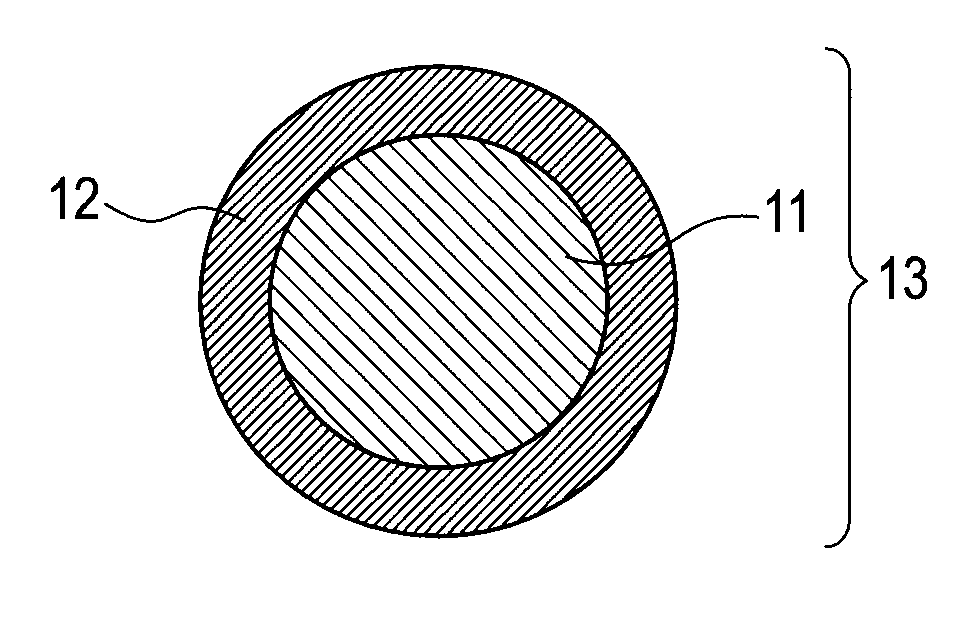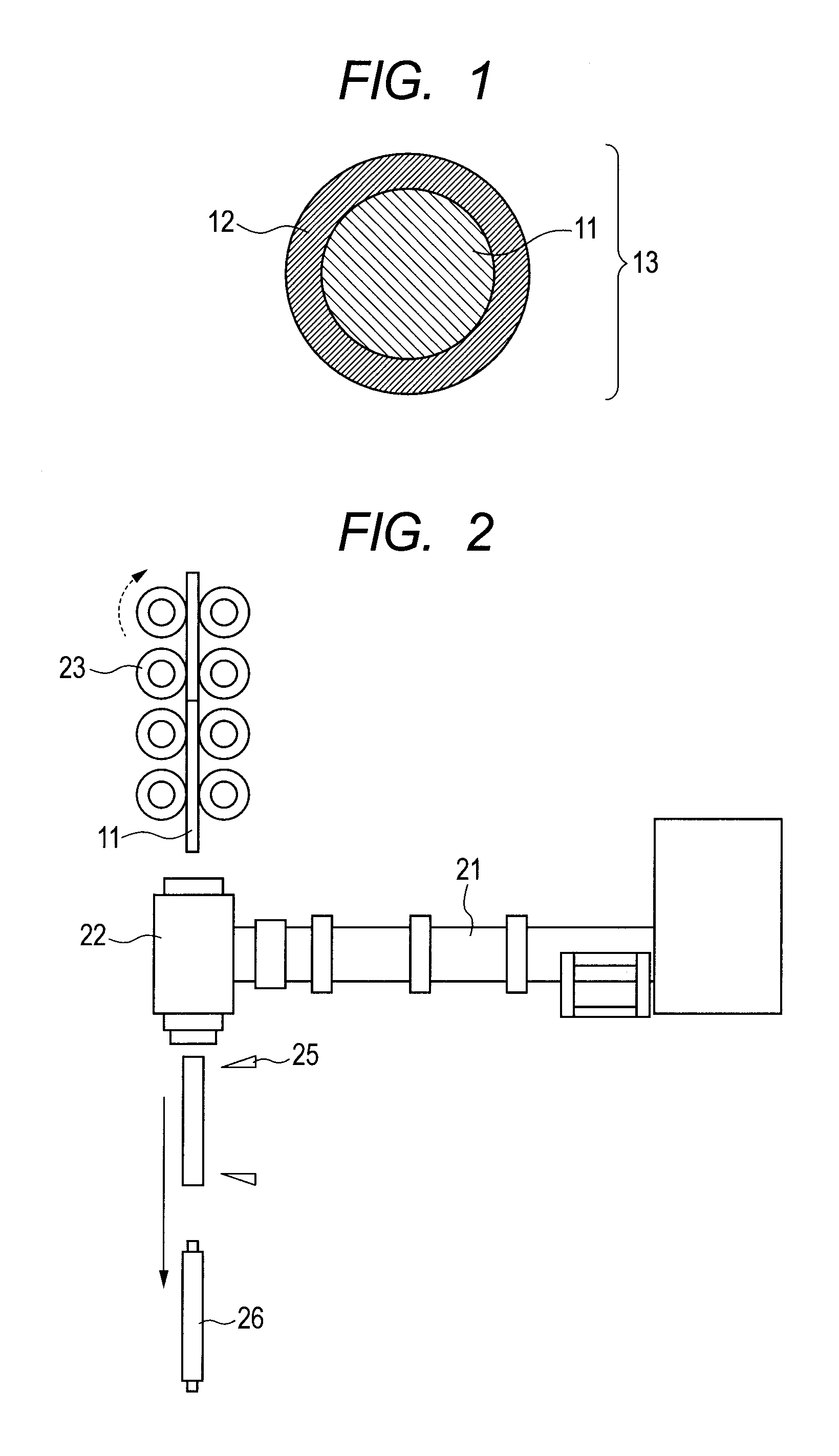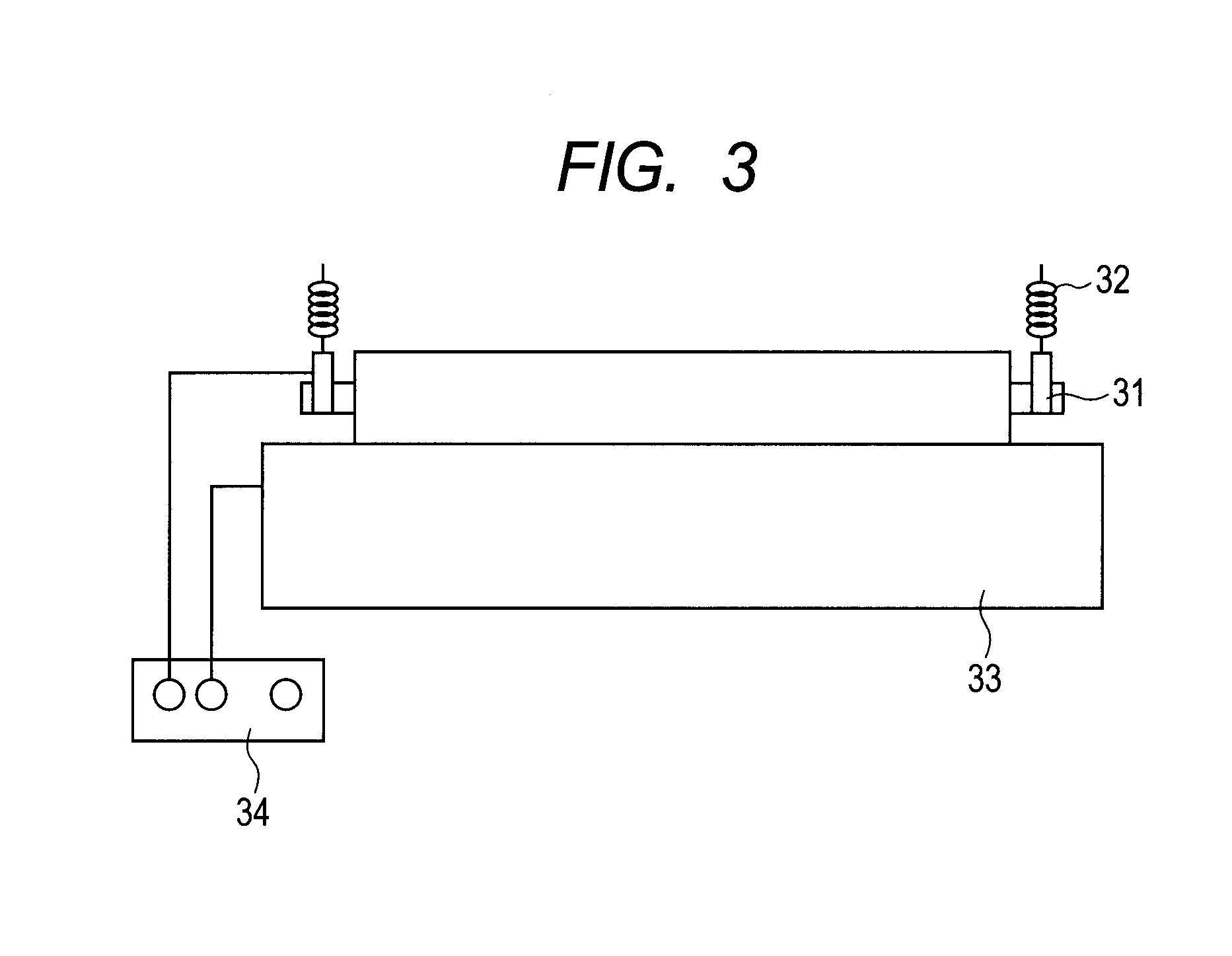Conductive member
a technology of conductive parts and components, applied in the field of conductive parts, can solve the problems of insufficient inventions to solve problems, and achieve the effect of improving the performance of the conductive parts
- Summary
- Abstract
- Description
- Claims
- Application Information
AI Technical Summary
Benefits of technology
Problems solved by technology
Method used
Image
Examples
example 1
[0056]100 Grams of an epichlorohydrin-ethylene oxide-allyl glycidyl ether (EP / EO / AGE) terpolymer (trade name: EPION 301, manufactured by DAISO CO., LTD.) were dissolved in 1,000 ml of N,N-dimethylformamide (DMF). To the solution were added 8 g of a 40-mass % aqueous solution of methylamine (containing 3.2 g of methylamine) and then the mixture was refluxed by heating under a nitrogen atmosphere at a temperature of 50° C. for 12 hours. Next, the reaction liquid was concentrated and exsiccated. Thus, such an EP / EO / AGE terpolymer that a quaternary ammonium ion was introduced into an epichlorohydrin unit portion was obtained. The terpolymer is defined as a modified epichlorohydrin rubber No. 1.
[0057]Next, materials shown in Table 1 were added to 100 parts by mass of the modified epichlorohydrin rubber No. 1 and then the contents were mixed with an open roll. Thus, an unvulcanized rubber composition No. 1 was obtained.
TABLE 1MaterialPart(s) by massModified epichlorohydrin rubber No. 1100...
example 2 to example 12
[0070]Modified epichlorohydrin rubbers No. 2 to No. 12 were synthesized in the same manner as in the modified epichlorohydrin rubber No. 1 according to Example 1 except that the epichlorohydrin rubber as a raw material, the kind of amine used in the modification, and the addition amount of the amine were changed as shown in Table 4. It should be noted that an alphabetical letter for the kind of epichlorohydrin rubber as a raw material in Table 4 represents a material shown in Table 5. Next, unvulcanized rubber compositions No. 2 to No. 12 were prepared in the same manner as in Example 1 except that the resultant modified epichlorohydrin rubbers No. 2 to No. 12 were used, and then charging rollers No. 2 to No. 12 were produced with the compositions. Those charging rollers were subjected to Evaluations 1 to 3 of Example 1.
TABLE 4ModifiedEpichloro-Amineepichloro-hydrinActualhydrinrubber asadditionExamplerubber No.raw materialKindamount (g)11JMethylamine3.222Dimethylamine4.733Trimethyla...
example 13
[0071]100 Grams of the epichlorohydrin rubber J as a raw material and 8.1 g of triethylamine were mixed with an open roll. Thus, a modified epichlorohydrin rubber No. 13 was obtained. An unvulcanized rubber composition No. 13 was prepared in the same manner as in Example 1 except that the resultant modified epichlorohydrin rubber No. 13 was used, and then a charging roller No. 13 was produced with the compositions. This charging roller was subjected to Evaluations 1 to 3 of Example 1.
PUM
| Property | Measurement | Unit |
|---|---|---|
| thickness | aaaaa | aaaaa |
| glass transition temperature | aaaaa | aaaaa |
| boiling point | aaaaa | aaaaa |
Abstract
Description
Claims
Application Information
 Login to View More
Login to View More - R&D
- Intellectual Property
- Life Sciences
- Materials
- Tech Scout
- Unparalleled Data Quality
- Higher Quality Content
- 60% Fewer Hallucinations
Browse by: Latest US Patents, China's latest patents, Technical Efficacy Thesaurus, Application Domain, Technology Topic, Popular Technical Reports.
© 2025 PatSnap. All rights reserved.Legal|Privacy policy|Modern Slavery Act Transparency Statement|Sitemap|About US| Contact US: help@patsnap.com



